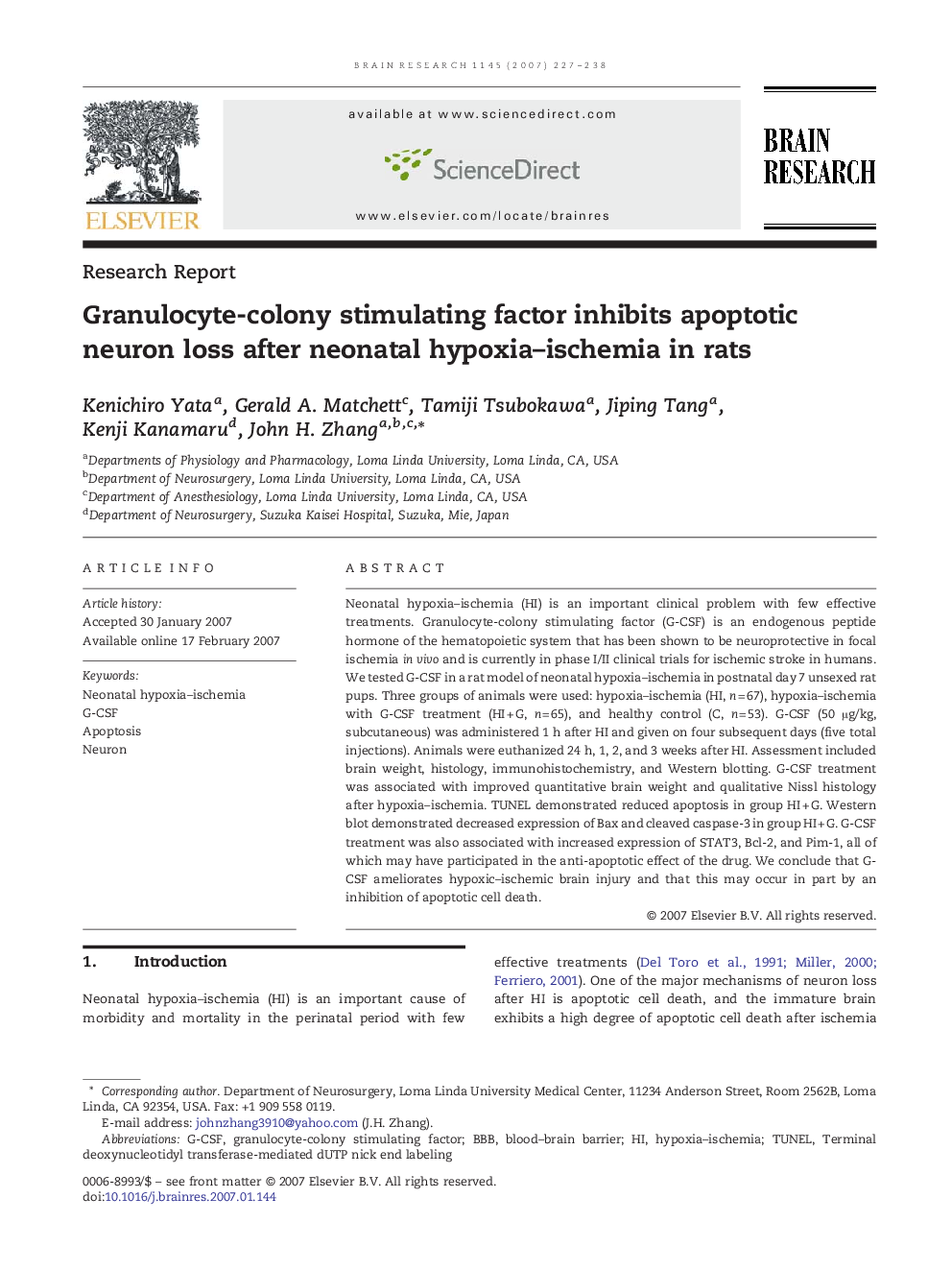| Article ID | Journal | Published Year | Pages | File Type |
|---|---|---|---|---|
| 4331375 | Brain Research | 2007 | 12 Pages |
Neonatal hypoxia–ischemia (HI) is an important clinical problem with few effective treatments. Granulocyte-colony stimulating factor (G-CSF) is an endogenous peptide hormone of the hematopoietic system that has been shown to be neuroprotective in focal ischemia in vivo and is currently in phase I/II clinical trials for ischemic stroke in humans. We tested G-CSF in a rat model of neonatal hypoxia–ischemia in postnatal day 7 unsexed rat pups. Three groups of animals were used: hypoxia–ischemia (HI, n = 67), hypoxia–ischemia with G-CSF treatment (HI + G, n = 65), and healthy control (C, n = 53). G-CSF (50 μg/kg, subcutaneous) was administered 1 h after HI and given on four subsequent days (five total injections). Animals were euthanized 24 h, 1, 2, and 3 weeks after HI. Assessment included brain weight, histology, immunohistochemistry, and Western blotting. G-CSF treatment was associated with improved quantitative brain weight and qualitative Nissl histology after hypoxia–ischemia. TUNEL demonstrated reduced apoptosis in group HI + G. Western blot demonstrated decreased expression of Bax and cleaved caspase-3 in group HI + G. G-CSF treatment was also associated with increased expression of STAT3, Bcl-2, and Pim-1, all of which may have participated in the anti-apoptotic effect of the drug. We conclude that G-CSF ameliorates hypoxic–ischemic brain injury and that this may occur in part by an inhibition of apoptotic cell death.
